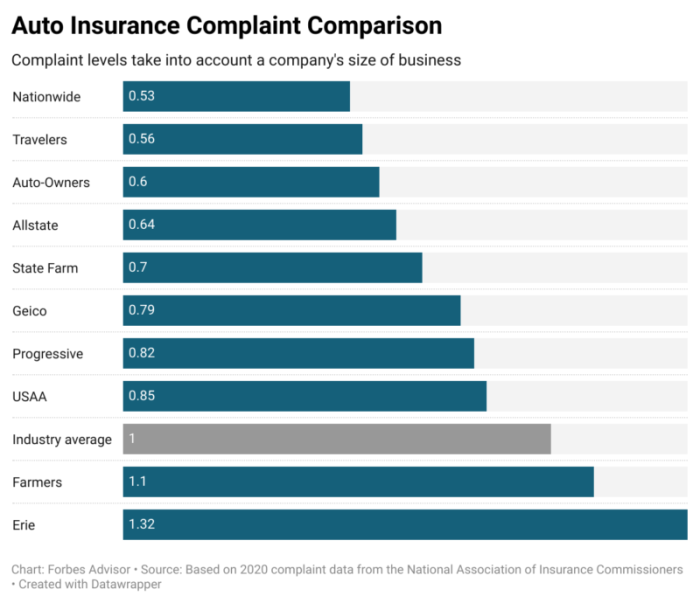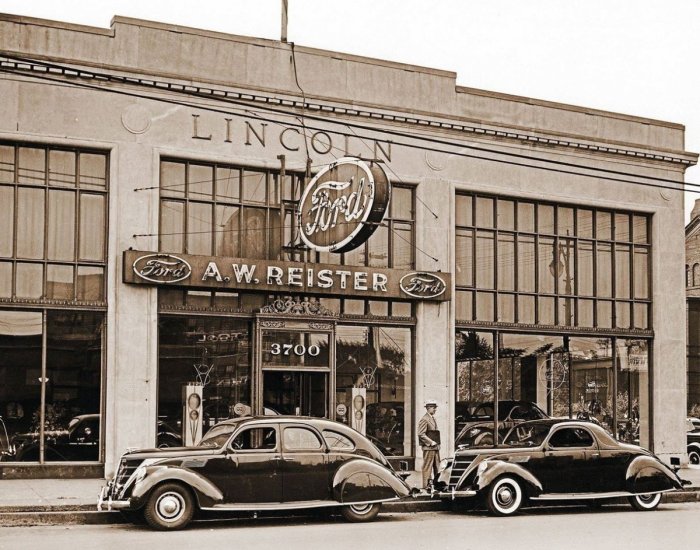The aftermath of a car accident can be chaotic, leaving victims grappling with injuries, property damage, and the daunting prospect of legal action. Navigating the complexities of insurance claims and potential lawsuits requires understanding the factors that determine whether a case will ultimately end up in court. From the severity of injuries and the role of insurance adjusters to liability disputes and the crucial role of attorneys, the path to litigation is paved with a multitude of variables. This exploration delves into these critical aspects, providing clarity on when a car accident escalates from a claim to a courtroom battle. This journey through the legal landscape of car accidents examines the interplay between injury severity, insurance negotiations, liability determination, and the strategic decisions made by both legal counsel and insurance companies. We will uncover the significance of evidence, witness testimony, and the various types of court proceedings that might be involved. Ultimately, the goal is to illuminate the circumstances that push a car accident claim from amicable settlement towards the more adversarial arena of the courtroom. Severity of Injuries and Damages The decision to pursue litigation following a car accident hinges significantly on the severity of injuries sustained and the extent of property damage. While minor fender benders often settle outside of court, more serious incidents frequently necessitate legal intervention to secure fair compensation for medical expenses, lost wages, and pain and suffering. The threshold for court involvement varies by jurisdiction and the specifics of each case, but certain patterns emerge.The severity of injuries plays a pivotal role in determining whether a car accident case proceeds to court. Cases involving catastrophic injuries are almost always litigated. The high cost of long-term care, rehabilitation, and lost earning potential necessitates a legal battle to secure adequate compensation. Conversely, accidents resulting in minor injuries, such as bruises or minor sprains, are less likely to reach the courtroom, often settling through insurance negotiations. Injury Severity and Litigation Injuries that commonly lead to litigation include traumatic brain injuries (TBIs), spinal cord injuries, broken bones requiring extensive surgery, severe burns, and permanent scarring or disfigurement. These injuries often involve substantial medical expenses, extensive rehabilitation periods, and lifelong limitations on daily activities. For instance, a TBI can result in millions of dollars in medical bills and lost wages, necessitating a lawsuit to recover these significant costs. Similarly, a spinal cord injury can lead to lifelong dependence on caregivers, generating substantial financial burdens that insurance companies may be unwilling to cover fully without court intervention. The potential for long-term disability and diminished quality of life associated with such injuries significantly increases the likelihood of litigation. Property Damage Costs and Court Involvement The cost of property damage, while important, is generally a secondary factor in determining whether a case goes to court. High property damage costs alone are less likely to result in litigation than significant personal injuries. However, the extent of property damage can be a contributing factor. For example, a car accident resulting in the total loss of a vehicle, coupled with significant personal injuries, is more likely to end up in court than an accident with minor injuries and minimal property damage. In cases where the property damage costs are exceptionally high, exceeding policy limits, or involve unique circumstances such as damage to expensive commercial vehicles, legal action may be more likely, even without catastrophic personal injuries. The interplay between injury severity and property damage cost forms a complex picture, with the severity of injuries generally outweighing the financial cost of vehicle repairs or replacement in determining the likelihood of court involvement. Insurance Company Involvement Insurance companies play a pivotal role in determining whether a car accident case proceeds to court. Their involvement begins immediately after a claim is filed and significantly impacts the trajectory of the legal process, often shaping the decision to settle or litigate. The actions of insurance adjusters, the negotiation process, and the specific circumstances of the accident all contribute to this crucial decision point.The insurance adjuster’s role is multifaceted. They investigate the accident, gathering evidence such as police reports, witness statements, and medical records. They assess the liability of each party involved and evaluate the extent of damages, including property damage and bodily injuries. Based on this assessment, the adjuster determines a reserve—an amount of money the insurance company sets aside to potentially cover the claim. This reserve, combined with the adjuster’s assessment of the case’s merits and potential legal costs, influences the decision to offer a settlement or proceed to litigation. Settlement Negotiation Process Negotiating a settlement involves a back-and-forth exchange between the injured party (or their attorney) and the insurance adjuster. The injured party presents their claim, detailing their injuries, medical expenses, lost wages, and other damages. The adjuster, representing the insurance company, assesses the validity and value of the claim, considering factors such as the severity of the injuries, the strength of liability, and the applicable state laws. Successful settlements hinge on several factors: the clarity and completeness of the documentation supporting the claim, the persuasiveness of the injured party’s narrative, and the adjuster’s willingness to negotiate in good faith. A strong case, supported by compelling evidence, often leads to a favorable settlement offer. Conversely, weak evidence or unclear liability can result in a low or no settlement offer. Scenarios Favoring Litigation Insurance companies are more inclined to pursue litigation under specific circumstances. Cases involving significant injuries with substantial medical expenses and lost wages are prime candidates for litigation, as the potential payout could far exceed the cost of legal proceedings. Cases with disputed liability, where determining fault is unclear or contested, are also more likely to end up in court. Similarly, situations where the injured party’s claim is deemed excessive or fraudulent, or where the insurance company believes the evidence overwhelmingly supports their position, will often lead to litigation. For example, a case involving a catastrophic injury, such as a spinal cord injury resulting in paralysis, with significant ongoing medical care and lost earning capacity, is a scenario where the insurance company may prefer to litigate rather than settle for a potentially large sum. Another example could be a case where a driver claims injuries from a minor fender bender with minimal damage, but seeks a disproportionately high settlement, leading the insurance company to question the legitimacy of the claim and opt for litigation. Liability and Fault Determination Determining fault in a car accident is crucial; it dictates which party bears responsibility for damages and, consequently, the direction of legal proceedings. This process, often complex, hinges on evidence presented and legal standards applied, varying across jurisdictions. The outcome directly impacts insurance claims, settlements, and potential court judgments.Establishing liability involves examining the circumstances surrounding the accident, including witness testimonies, police reports, and physical evidence. The legal standard applied generally centers on negligence, requiring demonstration of a duty of care owed, breach of that duty, causation, and damages. Comparative negligence systems, common in many states, apportion fault between multiple parties, with each responsible for their percentage of fault. Conversely, contributory negligence systems can bar recovery entirely if the injured party bears any fault. Determining Fault in Car Accidents The process of determining fault typically involves a thorough investigation of the accident’s circumstances. Investigators examine factors such as traffic signals, speed limits, driver behavior, road conditions, and any mechanical failures. Police reports often serve as initial assessments, although they are not definitive legal pronouncements. Expert witnesses, such as accident reconstruction specialists, may be called upon to analyze evidence and provide expert opinions on the cause of the accident. This process aims to establish the sequence of events leading to the collision and to identify the responsible party or parties. Evidence such as dashcam footage, witness statements, and physical damage to vehicles plays a significant role in reconstructing the accident and assigning fault. Examples of Clear and Disputed Liability In some cases, liability is straightforward. For example, a driver running a red light and causing a collision clearly bears responsibility. Similarly, a driver proven to be under the influence of alcohol or drugs and causing an accident would face clear liability. Conversely, situations where liability is disputed are more common. These might include accidents at intersections where both drivers claim the right-of-way, rear-end collisions where the cause is unclear (e.g., sudden braking), or accidents involving multiple vehicles where multiple parties share fault. In these instances, extensive investigation and potentially legal argument are required to determine the degree of fault assigned to each party. Legal Standards for Assessing Fault The legal standards used to assess fault vary across jurisdictions. Many states utilize a comparative negligence system, where the plaintiff’s recovery is reduced proportionally to their degree of fault. For instance, if a plaintiff is found 20% at fault, their damages are reduced by 20%. Other states adhere to a modified comparative negligence system, where the plaintiff cannot recover if their fault exceeds a certain threshold (often 50%). A few states retain contributory negligence, meaning any fault on the part of the plaintiff bars recovery altogether. These differences significantly impact the outcome of car accident cases and the amount of compensation awarded. Understanding the specific legal standard in the relevant jurisdiction is crucial in determining the likely outcome of a case. Negotiation and Settlement Attempts Pre-trial negotiations are a critical phase in the aftermath of a car accident, often determining whether a case proceeds to trial or concludes with a settlement. These negotiations involve intricate strategies and a careful assessment of various factors to reach a mutually agreeable resolution. The success or failure of these attempts hinges on several key elements, including the strength of the evidence, the severity of injuries, and the willingness of both parties to compromise.The process typically unfolds in stages. Initial contact often involves a letter from the plaintiff’s attorney outlining the claim and demanding compensation. The defendant’s insurer then evaluates the claim, considering the police report, medical records, and witness statements. If liability is clear-cut and damages are relatively straightforward, a settlement offer might be made at this early stage. However, more complex cases often require further investigation and potentially involve back-and-forth communication between attorneys, including informal discussions and formal exchange of settlement proposals. Mediation, a process involving a neutral third party to facilitate communication and compromise, may be employed to help bridge the gap between opposing positions. Formal settlement negotiations often involve detailed discussions of liability, damages, and the strengths and weaknesses of each party’s case. Strategies Employed in Settlement Negotiations Attorneys utilize various strategies to maximize their clients’ settlement outcomes. A strong understanding of case law and precedent is crucial in evaluating the potential value of a claim. Attorneys build a compelling narrative by meticulously documenting the accident’s impact on their client’s life, including lost wages, medical expenses, and pain and suffering. They may present expert witness testimony on damages, such as medical professionals assessing the long-term effects of injuries or economists calculating lost earning capacity. Furthermore, attorneys employ skillful negotiation tactics, such as presenting a range of potential settlement amounts, highlighting the risks and uncertainties of trial, and strategically disclosing or withholding information to influence the opposing party’s perspective. For example, an attorney might emphasize the potential for a large jury verdict to encourage a higher settlement offer from the insurance company. Conversely, they might downplay certain aspects of the case to avoid escalating the dispute. Factors Influencing Settlement Success Several factors significantly influence the success or failure of settlement negotiations. The strength of evidence supporting liability is paramount; clear evidence of fault greatly increases the likelihood of a favorable settlement for the injured party. The severity of injuries and the resulting medical expenses directly impact the potential settlement amount. Catastrophic injuries, such as paralysis or traumatic brain injury, naturally command higher settlements. Insurance coverage limits also play a crucial role; settlements cannot exceed the available policy limits. The willingness of both parties to compromise is essential; an inflexible stance by either side can derail negotiations. The experience and skill of the attorneys involved are also significant factors; adept negotiators can often achieve better outcomes for their clients. Finally, the jurisdiction’s legal climate and judicial precedent can influence settlement expectations. For instance, jurisdictions with a history of awarding high damages in similar cases might lead to higher settlement offers. A case involving a clear admission of fault by the at-fault driver and significant medical bills, for example, is more likely to result in a swift and favorable settlement than one involving disputed liability and minimal damages. The Role of Attorneys Attorneys play a pivotal role in determining whether a car accident case proceeds to court. Their involvement significantly influences the trajectory of a claim, from initial investigation to potential litigation. The level of attorney involvement directly correlates with the likelihood of a case ending in a courtroom trial.Attorney involvement dramatically increases the likelihood of a case going to court, particularly in complex cases involving significant injuries, disputed liability, or substantial damages. While many car accident claims settle out of court through negotiation, the presence of skilled legal counsel often elevates the stakes and necessitates a more formal approach, sometimes leading to litigation. This is because attorneys are trained to thoroughly investigate all aspects of the accident, assess the strength of their client’s case, and pursue the maximum possible compensation. Conversely, a lack of legal representation can often lead to a lower settlement offer, as insurance companies may perceive an unrepresented claimant as more vulnerable to negotiation pressure. Attorney Case Preparation for Litigation Preparing a car accident case for litigation is a meticulous process requiring substantial expertise. Attorneys begin by gathering and preserving all relevant evidence, including police reports, medical records, witness statements, photographs of the accident scene, and vehicle damage reports. They then conduct thorough legal research to identify applicable laws and precedents relevant to the case. This research often involves analyzing statutes related to negligence, comparative fault, and damages. Expert witnesses, such as accident reconstruction specialists or medical professionals, may be consulted to provide objective assessments and bolster the client’s claim. The attorney will then craft a comprehensive legal strategy, including the development of a compelling narrative of the accident and the damages suffered by their client. This strategy informs all subsequent actions, from pre-trial discovery to courtroom presentation. The attorney will also prepare and file all necessary legal documents, such as complaints, motions, and responses to discovery requests, adhering to strict procedural rules and deadlines. Comparative Attorney Approaches to Car Accident Claims Different attorneys may adopt varying approaches to handling car accident claims. Some attorneys may prioritize early settlement negotiations, aiming to resolve the case quickly and efficiently to minimize legal fees and court costs for their clients. They might focus on building a strong case through thorough documentation and persuasive communication with the insurance company. Other attorneys, particularly those specializing in personal injury litigation, might adopt a more aggressive approach, viewing litigation as a necessary tool to obtain maximum compensation for their clients. … Read more










